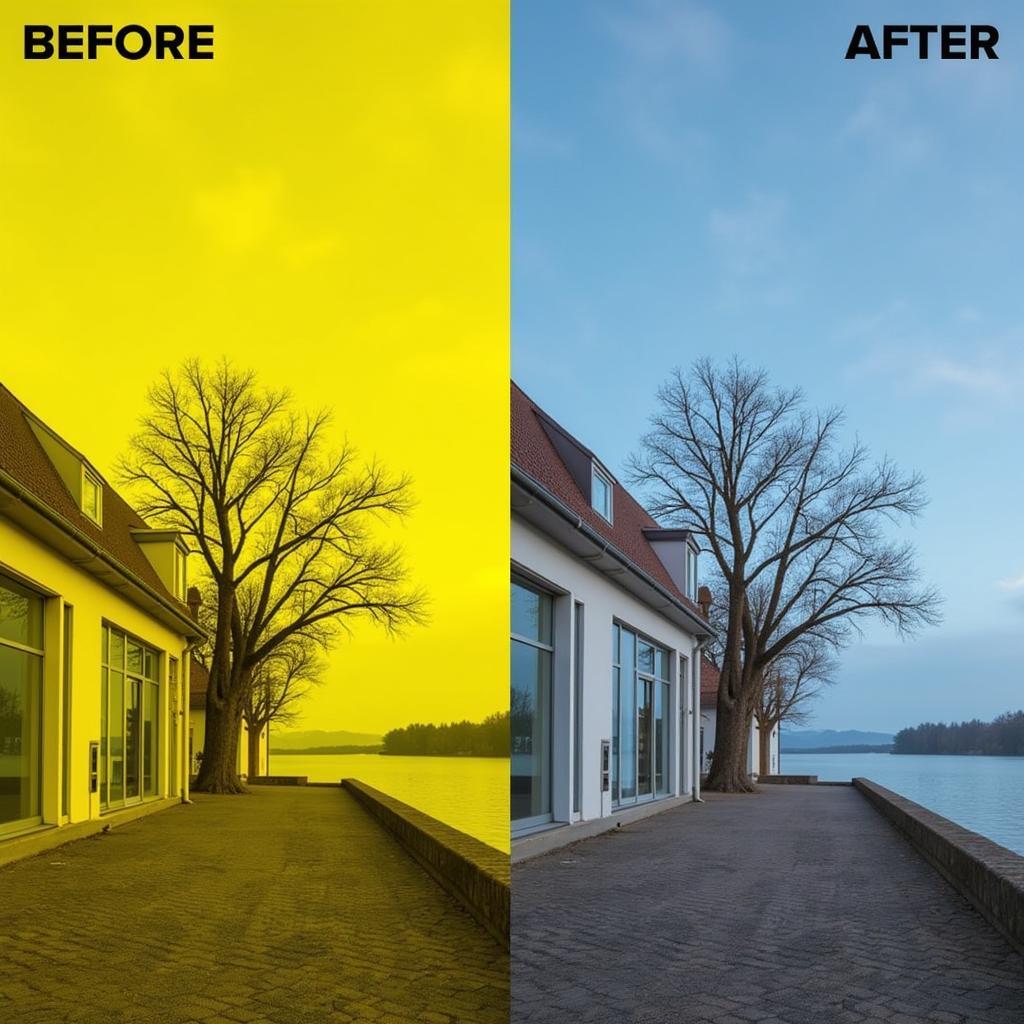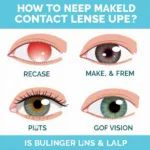Color correction is the process of altering and enhancing the colors within an image or video to achieve a desired look or correct imbalances. It’s a fundamental step in many visual mediums, from photography and film to graphic design and even home decor. But what does color correction actually do? It subtly manipulates hues, saturation, and luminance to create a balanced and visually appealing result. This can involve fixing inaccuracies captured by a camera, stylistic enhancements for creative purposes, or even adjusting colors to match a specific brand identity.
Understanding the Power of Color Correction
Color correction plays a vital role in ensuring visual consistency and impact. Imagine a photograph where the colors appear dull and lifeless, or a video with an unnatural orange tint. These issues can detract from the overall quality and message of the visual content. Color correction addresses these problems, bringing images and videos to life. It’s about more than just making things “look better”; it’s about conveying the right mood, atmosphere, and message. By manipulating colors, we can subtly influence the viewer’s perception and emotional response. A warm, inviting palette can create a sense of comfort, while cool, muted tones can evoke a feeling of tranquility.
 Color Correction Before and After Comparison
Color Correction Before and After Comparison
Whether it’s correcting white balance, adjusting skin tones, or enhancing the vibrancy of a landscape, color correction offers a powerful set of tools to refine and perfect your visual storytelling.
How Does Color Correction Work?
Color correction involves adjusting various aspects of an image’s color profile. This typically involves tweaking the following:
- White Balance: This is often the first step in color correction, ensuring that white appears truly white, and all other colors are accurately represented. Incorrect white balance can lead to unwanted color casts, such as a blue tint in a photo taken under fluorescent lighting.
- Exposure: This refers to the overall brightness of the image. Adjusting exposure can help recover details in shadows and highlights.
- Contrast: This relates to the difference between the darkest and lightest parts of the image. Increasing contrast can make an image appear more dynamic, while decreasing it can create a softer, more muted look.
- Saturation: This refers to the intensity of the colors. Increasing saturation makes colors more vivid, while decreasing it makes them appear more washed out.
- Hue: This is the pure color itself, like red, blue, or green. Adjusting hue can shift the overall color balance of an image.
By skillfully manipulating these elements, color correction experts can achieve precise and impactful results.
Why is Color Correction Important?
Color correction is essential for a variety of reasons, depending on the medium. In photography, it ensures that images accurately reflect the scene as it was perceived. In film, it helps establish a consistent visual style and enhance the storytelling. In graphic design, it ensures that colors are consistent across different platforms and media. Even in home decorating, understanding color correction principles can help you create a harmonious and aesthetically pleasing space. Similar to [how long does it take to get hair colored], the time taken for color correction varies depending on the complexity of the project.
What’s the Difference Between Color Correction and Color Grading?
While often used interchangeably, color correction and color grading are distinct processes. Color correction focuses on fixing technical issues and achieving a neutral, balanced image. Color grading, on the other hand, is a more creative process, used to establish a specific mood or aesthetic. Think of color correction as laying the foundation, while color grading is adding the finishing touches. It’s the difference between ensuring accurate colors and using color to tell a story. For those interested in [how much for a cut and color], pricing can vary, just like the time required for these services.
Is Color Correction Difficult to Learn?
While the basics of color correction are relatively easy to grasp, mastering the art requires practice and a good eye for detail. There are numerous online resources, tutorials, and software programs available to help you learn. Similar to [how to get natural hair color back], reverting to an original color can be complex, and color correction sometimes requires similar finesse.
Conclusion
Color correction is a vital tool for anyone working with visual media. It allows us to enhance the quality, consistency, and impact of our images and videos. Whether you’re a professional photographer, filmmaker, or simply someone who wants to improve their photos, understanding what color correction does is essential. By mastering this art, you can unlock the full potential of your visual storytelling. For more information on the duration of color correction, check out [how long does color correction take]. For a slight variation on that question, you can also look at [how long does a color correction take]. For those struggling with hair color and wanting to return to their natural shade, this article on [how to get natural hair color back] might be helpful.
FAQ
- What software is used for color correction? Adobe Photoshop, Lightroom, DaVinci Resolve, and Final Cut Pro are popular choices.
- Can I learn color correction on my own? Absolutely! Many free and paid resources are available online.
- What is the first step in color correction? Typically, it’s adjusting the white balance.
- How long does color correction take? It depends on the complexity of the project, ranging from a few minutes to several hours.
- Is color grading the same as color correction? No, they are distinct but related processes.
- What are some common color correction mistakes? Over-saturating colors and incorrect white balance are common pitfalls.
- Why are my photos dull? This could be due to incorrect exposure or white balance settings.
Situations where questions about color correction are common:
- When photos or videos appear too yellow, blue, or otherwise discolored.
- When skin tones in a photo look unnatural.
- When a video needs to match the color grading of previous footage.
- When a logo or branding element needs to appear consistent across different platforms.
You might also be interested in:
- How to improve your photography skills
- The basics of video editing
- The importance of color in graphic design
If you need any further assistance, please do not hesitate to contact us. Call us at 0373298888, email us at [email protected], or visit our office at 86 Cầu Giấy, Hà Nội. Our customer service team is available 24/7.

